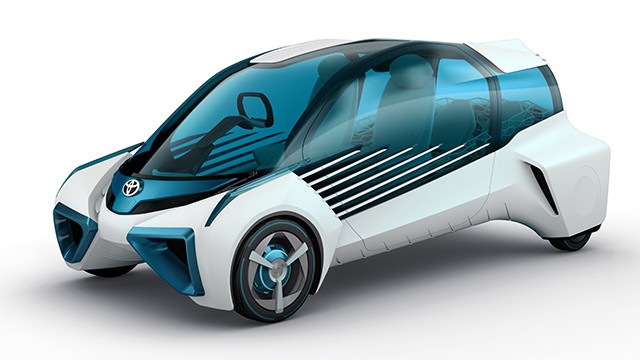 For the Tokyo Auto Show Toyota revealed two new little concept cars—the Toyota FCV Plus and Toyota KIKAI. The FCV Plus can use external hydrogen sources to create electricity and the KIKAI shows off its mechanical insides for the world to admire. Toyota, in its news release, does not mention any connected car features. They are designing cars that are to be driven by people, especially the KIKAI.
For the Tokyo Auto Show Toyota revealed two new little concept cars—the Toyota FCV Plus and Toyota KIKAI. The FCV Plus can use external hydrogen sources to create electricity and the KIKAI shows off its mechanical insides for the world to admire. Toyota, in its news release, does not mention any connected car features. They are designing cars that are to be driven by people, especially the KIKAI.
The Toyota FCV Plus is an eco car that not only burns hydrogen to create electricity from it’s own hydrogen tank, the car can also generate electricity directly from hydrogen stored outside the vehicle. The vehicle can thus be transformed into a stable source of electric power for use at home or away. When the car is not being used as a means of transport, it shares its power generation capabilities with communities as part of the local infrastructure.
The fuel cell stack is mounted between the front tires, and the hydrogen tank behind the rear seat. Together with the adoption of independent in-wheel motors in all four wheels, this allows for a spacious cabin despite the vehicle’s compact vehicle body. By concentrating functional parts at the front and the rear of the vehicle, this next-generation fuel cell vehicle package creates an optimal weight balance and a wide field of vision. The exterior adopts a distinctive, sleek shape, while the frame structure of the interior ensures rigidity despite the light weight of the car. Altogether, the design conveys the vehicle’s advanced technology and outstanding environmental performance.
 The Toyota KIKAI shows off the insides of the car. The concept was designed to explore and emphasize the fundamental appeal of machines, to be admired for ther fine craftsmanship, their beauty, simplicity, and their fascinating motion. This concept takes the machinery, normally hidden beneath the vehicle body, and makes an open display of its beauty. Directly expressed in this way, the vehicle’s inner workings become part of the exterior. In addition to the carefully designed form, continued into details including the fuel tank, reserve tank, and exhaust pipes, the analog-style meters and switches offer an engaging dialog with the machinery.
The Toyota KIKAI shows off the insides of the car. The concept was designed to explore and emphasize the fundamental appeal of machines, to be admired for ther fine craftsmanship, their beauty, simplicity, and their fascinating motion. This concept takes the machinery, normally hidden beneath the vehicle body, and makes an open display of its beauty. Directly expressed in this way, the vehicle’s inner workings become part of the exterior. In addition to the carefully designed form, continued into details including the fuel tank, reserve tank, and exhaust pipes, the analog-style meters and switches offer an engaging dialog with the machinery.
While most vehicles conceal their inner workings beneath smooth sheet metal, this concept encourages us to appreciate the complex beauty of the mechanical aspects of cars. More broadly, it reminds us of the appeal of the physical and tactile in a digital age.